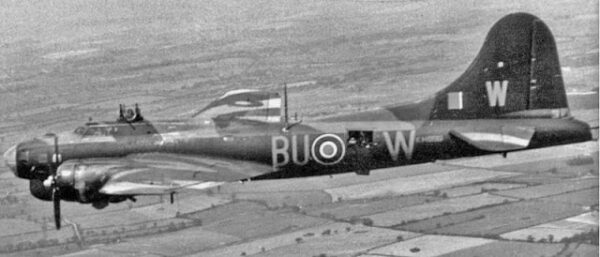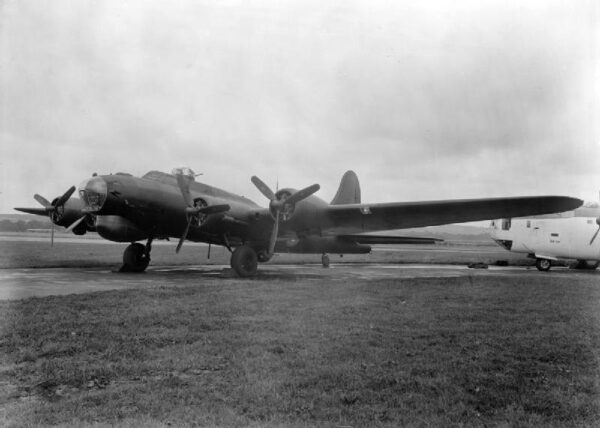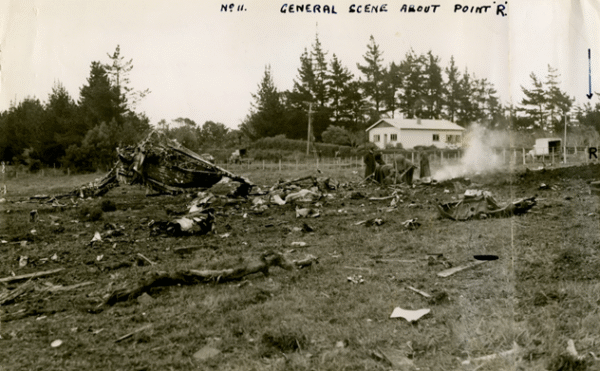Research
Research
Aircraft
Boeing B-17
When we think of the aircraft flown by the crews of Bomber Command, thoughts typically turn to the ‘heavies’ – the Lancaster, Stirling, and Halifax – and the nimble, multi-purpose Mosquito and the iconic Wellington. In fact a number of other aircraft were used through the course of the war and included several American types. The Boeing B17 became a key resource for 100 Group’s radio countermeasure tactics in support of the bomber streams over Europe.

Bristling with aerials the 100g Fortresses were responsible for jamming enemy radar and disrupting the voice comms used to direct Luftwaffe night fighters.
Best known as the stalwart of the daylight bomber offensive by the USAAF, RAF 90 Sq. trialled 20 B17Cs, renamed as the Fortress Mk I. They were used for high-altitude daylight bombing but after several losses and technical issues were deemed unsuitable for Bomber Command operations.
Further planned supplies were then diverted to Coastal Command before 85 B-17Gs (Fortress Mk IiI) were delivered to Bomber Command and used by 100 (BS) Group in radio countermeasure roles. Lindsey Budge from Tauranga flew as a rear gunner on 100 Group Flying Fortress bombers as they engaged in electronic warfare amongst the bomber streams.

An electronic warfare Fortress III of 214 Squadron (100 Group) with nose-mounted H2S navigation radar.
100 Group had been formed in late 1943 to consolidate Britain’s attempts to produce an effective and integrated electronic countermeasures system. By 1945 the aircraft of 100 Group were equipped with and evaluated at least 32 different electronic devices, each one attempting to confuse or disable the German radar network, reducing Bomber Command losses and increasing the effectiveness of their bombing raids.
The highly classified nature of these missions and the equipment used dictated that these aircraft were under constant armed guard whilst on the ground at their home stations at Sculthorpe and Oulton and the schemes applied to these aircraft certainly give them something of a clandestine appearance.
The best known, New Zealand link to the B-17 occurred in the early hours of June 9, 1942, when Aucklanders were woken by an explosion heard across much of the city. A USAAF Boeing B17-E Flying Fortress, carrying four 500lb bombs, had crashed near the Whenuapai Air Base as it departed on a flight from Auckland to Laverton near Melbourne.
The aircraft had barely got airborne before it crashed with a full bomb load into the uphill slopes on the nearby farm of George Sinton. Two of the four 500lb bombs onboard exploded, blowing the Sinton house of its foundations,
The initial crash investigation was complicated by the fact that the American plane, dubbed the Texas Tornado, was not officially here. It was decided by the investigation’s panel that pilot error was to fault, and the crater left behind by the crash was quickly filled in.

On June 9 1942, a U.S.A.A.F Flying Fortress B 17 crashed killing all those on board, shortly after taking off from Whenuapai Aerodrome.
(Credit: Archives New Zealand Reference: ADQA 17211 AIR1 572 25/2/588)
July 13, 2025